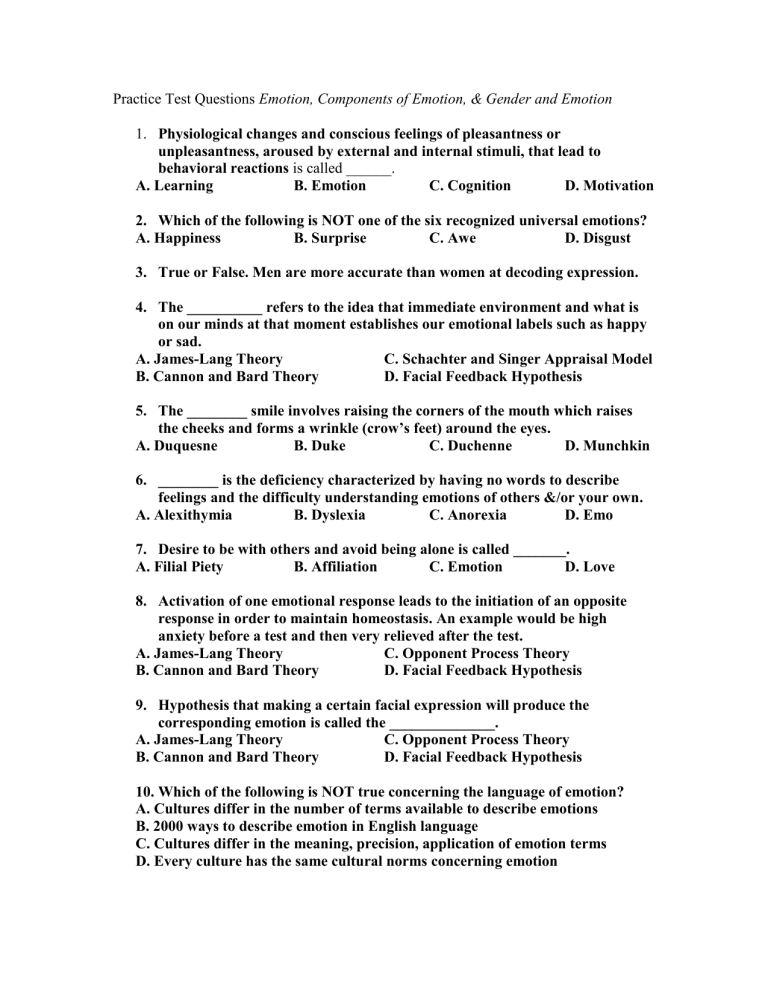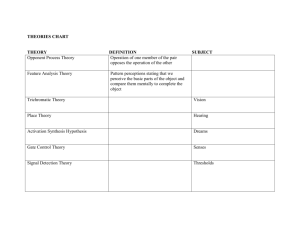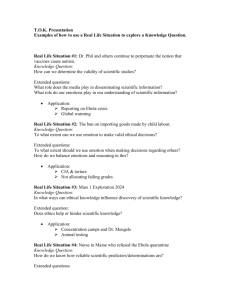Practice Test Questions Emotion, Components of Emotion, & Gender

Practice Test Questions Emotion, Components of Emotion, & Gender and Emotion
1.
Physiological changes and conscious feelings of pleasantness or unpleasantness, aroused by external and internal stimuli, that lead to behavioral reactions is called ______.
A. Learning B. Emotion C. Cognition D. Motivation
2.
Which of the following is NOT one of the six recognized universal emotions?
A. Happiness B. Surprise C. Awe D. Disgust
3.
True or False. Men are more accurate than women at decoding expression.
4.
The __________ refers to the idea that immediate environment and what is on our minds at that moment establishes our emotional labels such as happy or sad.
A. James-Lang Theory C. Schachter and Singer Appraisal Model
B. Cannon and Bard Theory D. Facial Feedback Hypothesis
5.
The ________ smile involves raising the corners of the mouth which raises the cheeks and forms a wrinkle (crow’s feet) around the eyes.
A. Duquesne B. Duke C. Duchenne D. Munchkin
6.
________ is the deficiency characterized by having no words to describe feelings and the difficulty understanding emotions of others &/or your own.
A. Alexithymia B. Dyslexia C. Anorexia D. Emo
7.
Desire to be with others and avoid being alone is called _______.
A. Filial Piety B. Affiliation C. Emotion D. Love
8.
Activation of one emotional response leads to the initiation of an opposite response in order to maintain homeostasis. An example would be high anxiety before a test and then very relieved after the test.
A. James-Lang Theory
B. Cannon and Bard Theory
C. Opponent Process Theory
D. Facial Feedback Hypothesis
9.
Hypothesis that making a certain facial expression will produce the corresponding emotion is called the ______________.
A. James-Lang Theory C. Opponent Process Theory
B. Cannon and Bard Theory D. Facial Feedback Hypothesis
10.
Which of the following is NOT true concerning the language of emotion?
A. Cultures differ in the number of terms available to describe emotions
B. 2000 ways to describe emotion in English language
C. Cultures differ in the meaning, precision, application of emotion terms
D. Every culture has the same cultural norms concerning emotion
11.
_________ is a facial expression formed by flexing the muscles near both ends of the mouth.
A. Smiling B. Bowing C. Flexing D. Frowning
12.
Which part of the limbic system allows emotional response to begin before full awareness?
A. Hypothalamus B. Pituitary Gland C. Amygdala D. Hippocampus
13.
Which of the following is NOT a form of nonverbal communication?
A. Hand gestures B. Posture C. Gait D. Talking
14.
Which of the following is NOT a form of body language?
A. Emblems B. Transductors C. Illustrators D. Adaptors
15.
Eye contact, nodding of the head, and looking away are examples of which type of body language?
A. Regulator B. Adaptor C. Emblem D. Illustrator
16.
Which of the types of body language can best be described as gestures with specific meanings such as 'thumbs-up' or the 'one-fingered salute?’
A. Regulator B. Adaptor C. Emblem D. Illustrator
17.
True or False. Facial expressions are the most reliable and universal indicator of emotions.
18. Which of the following types of theories states that the information from emotional stimuli is simultaneously relayed by the thalamus to higher brain centers and the sympathetic nervous system?
A. James-Lang Theory C. Opponent Process Theory
B. Cannon and Bard Theory D. Facial Feedback Hypothesis
19.
Which of the following types of body language can best be described as gestures that accompany speech such as amplify, accent, and reinforcing verbal content?
A. Regulator B. Adaptor C. Emblem D. Illustrator
20.
Which of the following types of body language can best be described as manipulations for a purpose, little specific meaning such as scratching or picking of the skin?
A. Regulator B. Adaptor C. Emblem D. Illustrator
ANSWER KEY
1.
B
2.
C
3.
False
4.
C
5.
C
6.
A
7.
B
8.
C
9.
D
10.
D
11.
A
12.
C
13.
D
14.
B
15.
A
16.
C
17.
True
18.
B
19.
D
20.
B







